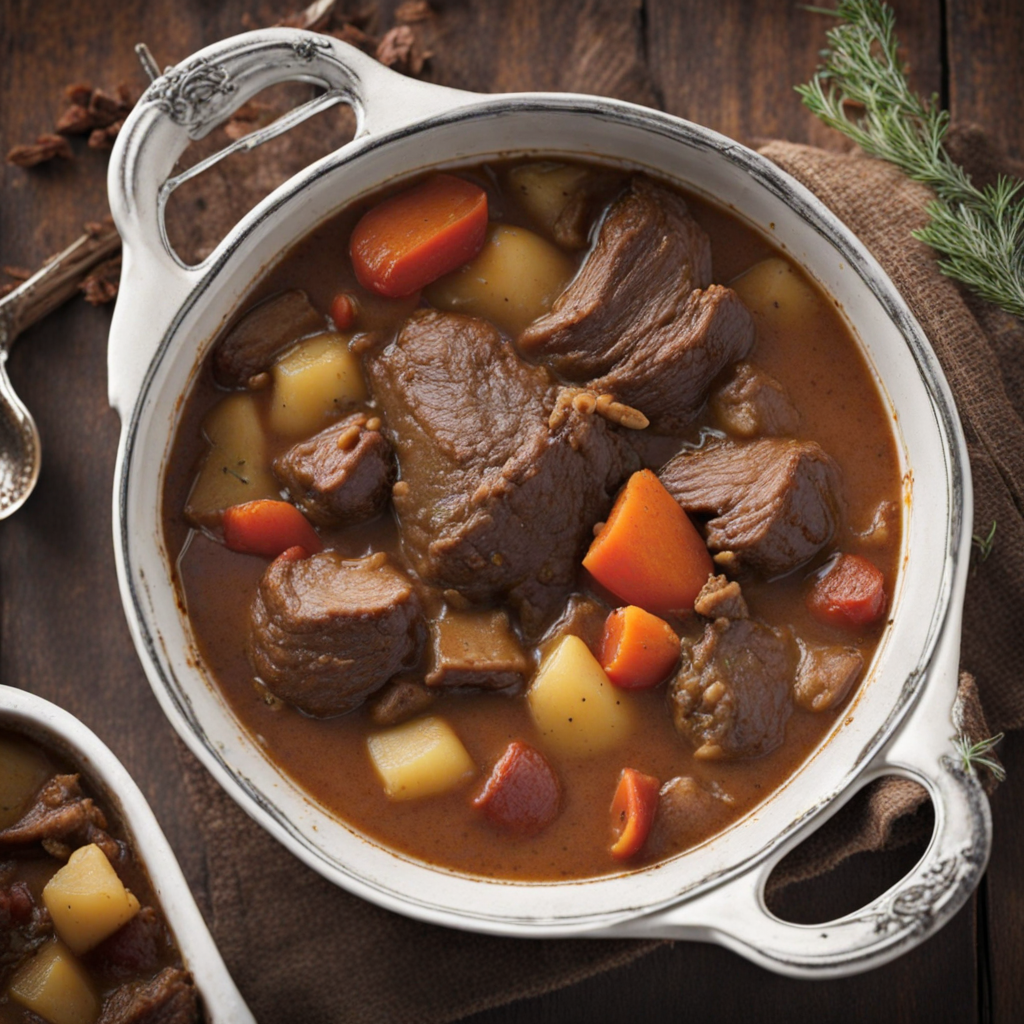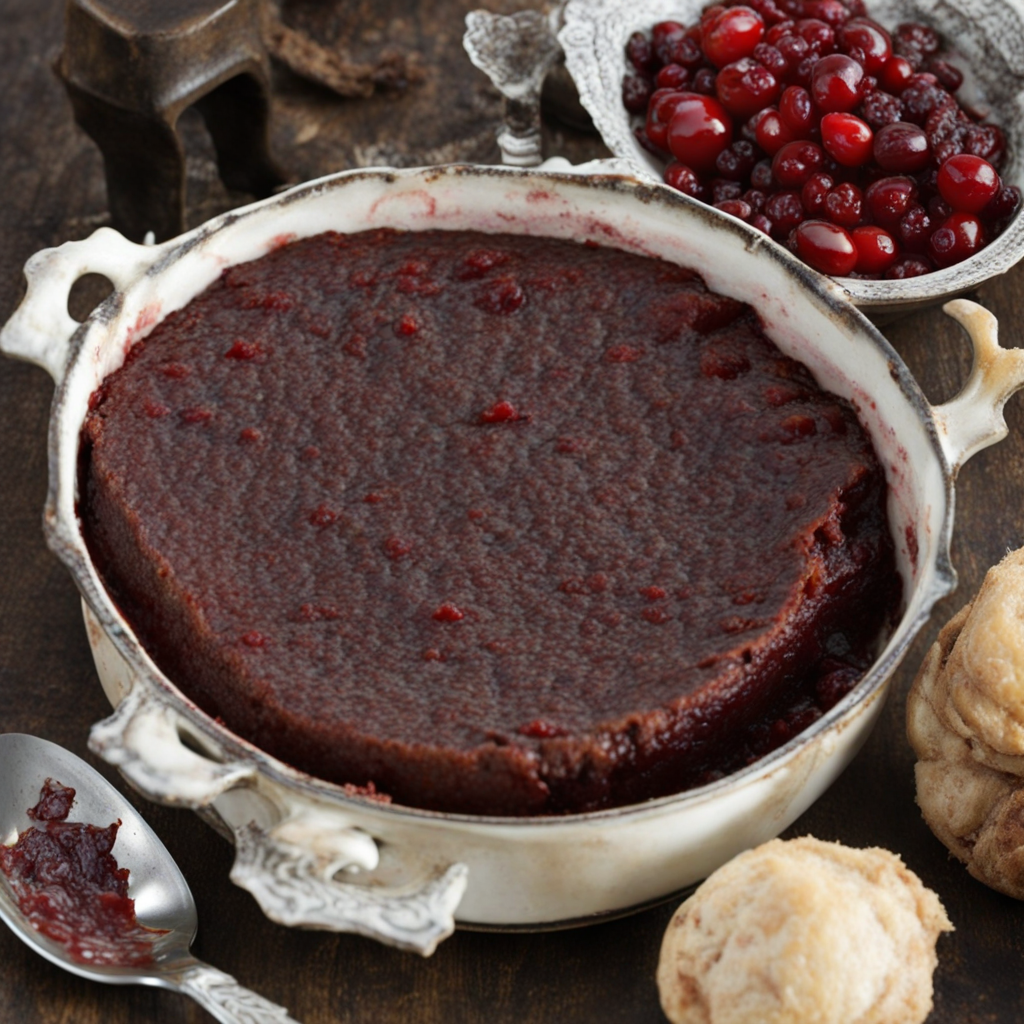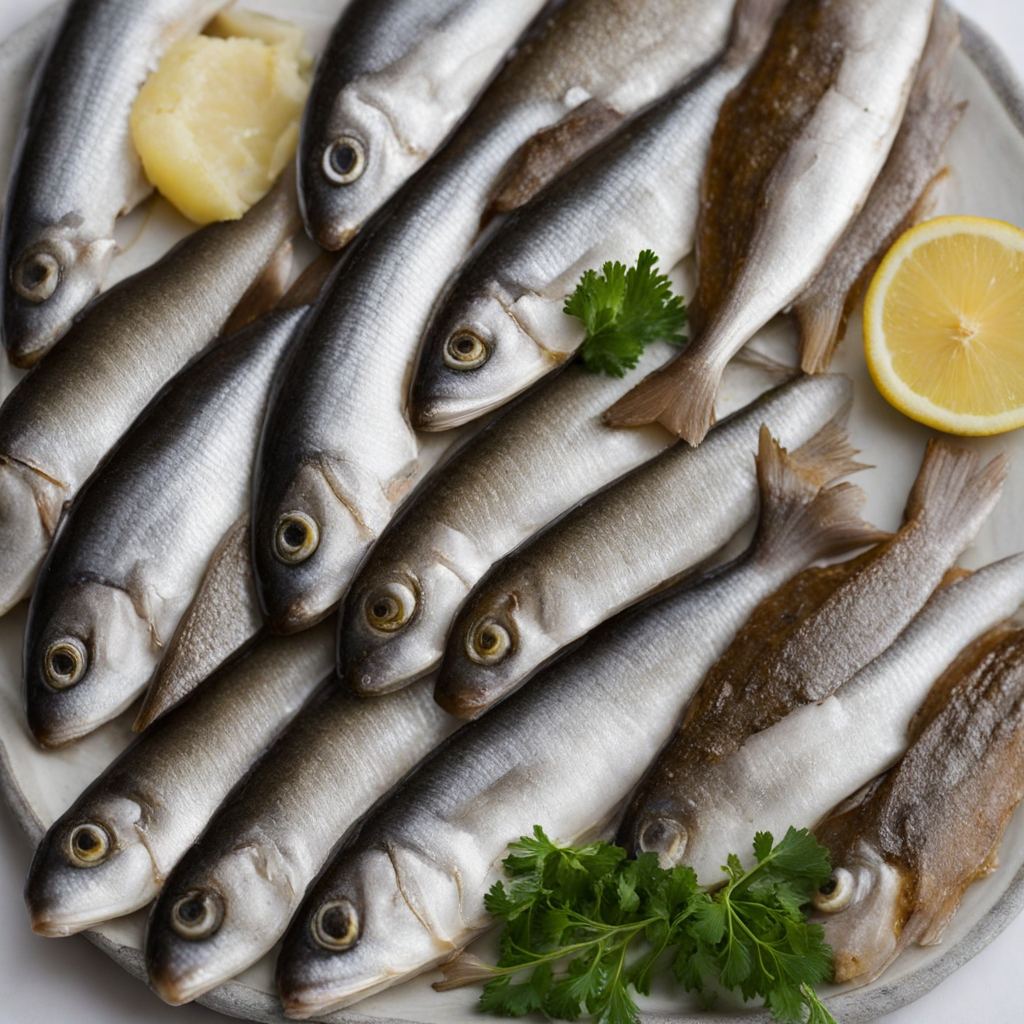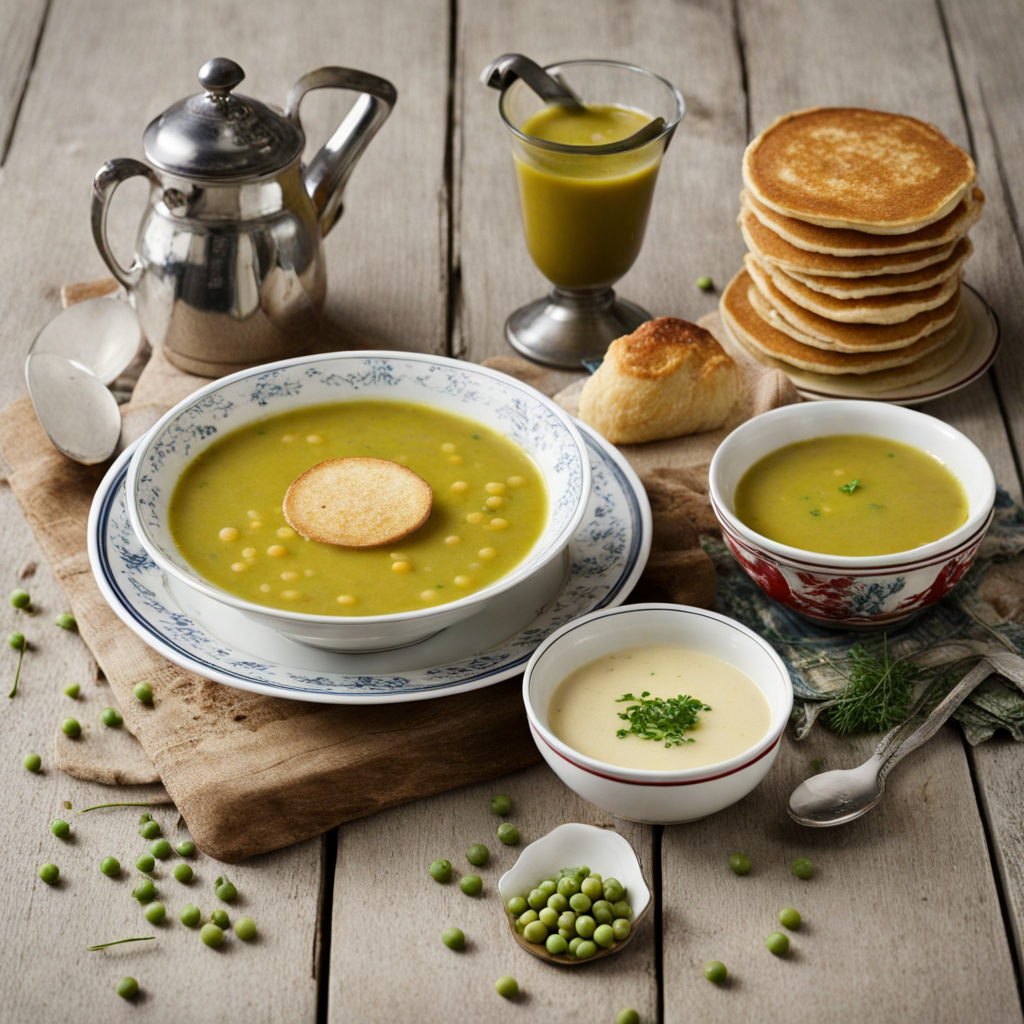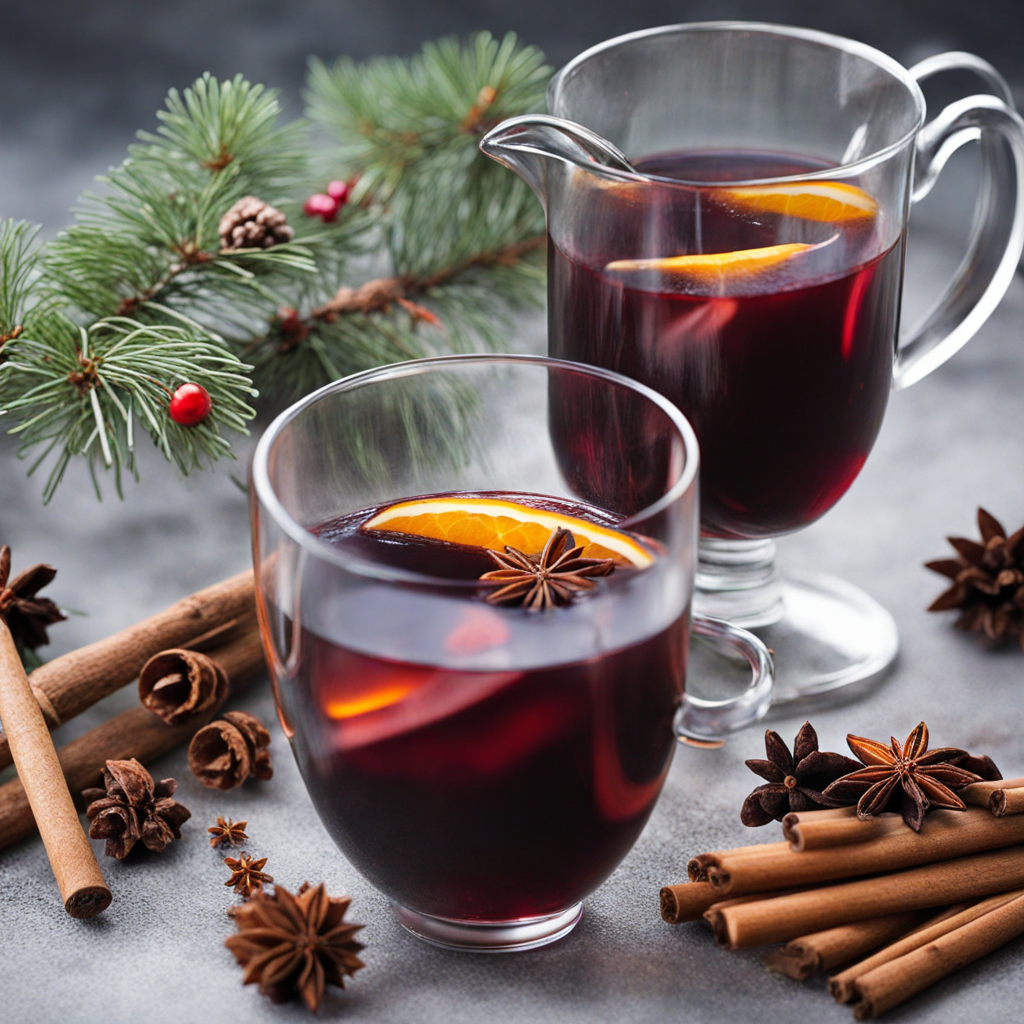Swedish Moose Stew
Swedish Moose Stew, or 'Älggryta', is a hearty and flavorful dish that embodies the essence of Scandinavian cuisine. This stew features tender pieces of moose meat, which is known for its rich, gamey flavor and lean texture. The meat is typically marinated in a blend of spices and herbs, often including juniper berries, bay leaves, and thyme, allowing the natural flavors to develop beautifully. The slow-cooking process ensures that the meat becomes melt-in-your-mouth tender, infusing the stew with a deep, savory essence that warms the soul on chilly evenings. Alongside the moose, a variety of vegetables are included to enhance the stew's depth and complexity. Carrots, potatoes, and onions are common additions, providing a subtle sweetness and earthy undertone that balances the robust flavor of the meat. Finished with a splash of red wine or a dollop of crème fraîche, the stew presents a comforting, rich texture that is perfect for soaking up with crusty bread or served alongside traditional Swedish sides like lingonberry sauce, which adds a delightful tart contrast. Served in a rustic bowl, Swedish Moose Stew is not just a meal; it’s an experience that brings together the warmth of home cooking and the wild charm of Sweden’s natural landscape. This dish is often enjoyed during the colder months, making it a staple for family gatherings and festive occasions. With its unique combination of flavors and ingredients, Swedish Moose Stew is a culinary adventure that invites those seeking to explore new tastes to savor the authentic flavors of Sweden.
How It Became This Dish
The Engaging History of Älggryta: Sweden's Beloved Elk Stew Älggryta, or elk stew, is a dish deeply rooted in the culinary traditions of Sweden, reflecting the country’s rich natural resources and cultural heritage. This hearty stew not only embodies the rustic flavors of the Swedish wilderness but also symbolizes the relationship between Swedes and their environment, particularly the deep forests that cover much of the country. As we delve into its origins, cultural significance, and the evolution of Älggryta over time, we uncover a dish that is as much about community and tradition as it is about flavor. #### Origins of Älggryta The history of Älggryta can be traced back to the indigenous Sámi people, who have lived in the northern parts of Sweden for thousands of years. The Sámi were expert hunters and gatherers, relying on reindeer and elk as primary sources of sustenance. The practice of hunting elk, or moose, has been a part of Swedish life for centuries. With an estimated population of over 300,000 elk in Sweden, these majestic animals have provided not only meat but also hide and bones for various uses. Elk hunting became a vital aspect of Swedish culture, particularly in rural areas where access to other forms of protein was limited. The meat was often preserved through methods such as smoking, drying, or salting, but fresh elk meat was celebrated for its rich flavor and nutritional value. The practice of cooking elk in stews likely emerged as a practical method to utilize tougher cuts of meat, combining them with seasonal vegetables, herbs, and spices to create a warm, nourishing meal. #### Cultural Significance Älggryta holds a special place in Swedish cuisine and culture. It is more than just a dish; it represents a connection to the land and the traditions of Swedish life. The preparation of Älggryta often takes place during the hunting season, which typically runs from September to December. This period is not just about harvesting game; it is also a time for families and friends to come together in celebration of nature’s bounty. In Sweden, food is often associated with social gatherings, and Älggryta is no exception. Whether served at a cozy cabin in the woods after a day of hunting or at a festive dinner with family and friends, this dish fosters a sense of community. It is customary to accompany the stew with traditional Swedish sides, such as lingonberry sauce, pickled cucumbers, and creamy mashed potatoes, enhancing the meal's flavor and cultural authenticity. The dish also has a symbolic significance, representing sustainability and respect for nature. Many Swedes are proud of their hunting heritage, and the practice is regulated to ensure that elk populations remain healthy and sustainable. In recent years, there has been a growing emphasis on locally sourced and wild foods, with Älggryta serving as a quintessential example of the farm-to-table movement in Sweden. #### Development Over Time As Swedish society evolved, so too did the preparation and presentation of Älggryta. In the early 20th century, as urbanization increased, traditional hunting practices began to decline. However, a renewed interest in outdoor activities and local food sourcing in the late 20th and early 21st centuries has led to a revival of elk hunting and the preparation of Älggryta in both rural and urban settings. Modern interpretations of Älggryta often incorporate contemporary cooking techniques and ingredients, reflecting the ongoing evolution of Swedish cuisine. While the classic recipe typically includes elk meat, root vegetables like carrots and potatoes, onions, and a variety of herbs, many chefs today experiment with flavors and cooking methods. Some chefs use red wine or dark beer in the stew, while others may add mushrooms or even exotic spices, adapting the dish to suit modern palates. In urban areas, Älggryta has made its way onto restaurant menus, celebrated for its rustic charm and hearty flavors. Chefs often highlight the ethical and sustainable aspects of using wild game, appealing to a growing demographic of environmentally conscious diners. Furthermore, as Swedish cuisine gains international acclaim, dishes like Älggryta help to showcase the uniqueness of Swedish culinary traditions to a global audience. #### Seasonal Variations and Regional Differences Älggryta is particularly popular in Sweden's northern regions, where elk populations are abundant. However, regional variations exist, reflecting local ingredients and culinary practices. In some areas, for instance, chefs may incorporate juniper berries or cloudberries, adding a distinctive flavor that ties the dish to its geographical roots. The dish is also influenced by the seasons. In the colder months, Älggryta serves as a warming comfort food, while during the warmer months, lighter versions may include fresh herbs and vegetables, emphasizing seasonal produce. As a result, Älggryta is not just a static recipe but a dynamic dish that evolves with the seasons and the preferences of those who prepare it. #### Conclusion Älggryta is more than just elk stew; it is a dish steeped in history, culture, and tradition. From its origins among the Sámi people to its place in modern Swedish cuisine, Älggryta embodies the spirit of the Swedish landscape and the values of sustainability and community. As more people turn to local and wild foods, this traditional dish continues to thrive, bridging the gap between the past and present. Today, whether enjoyed in a rustic cabin surrounded by friends or at a trendy restaurant in Stockholm, Älggryta remains a beloved staple of Swedish cuisine. It is a testament to the enduring connection between people, food, and nature—a reminder of the rich cultural tapestry that defines Sweden’s culinary history. As you savor a bowl of this hearty stew, you partake not only in a meal but in a story that spans generations, a celebration of community, heritage, and the flavors of the Swedish wilderness.
You may like
Discover local flavors from Sweden



